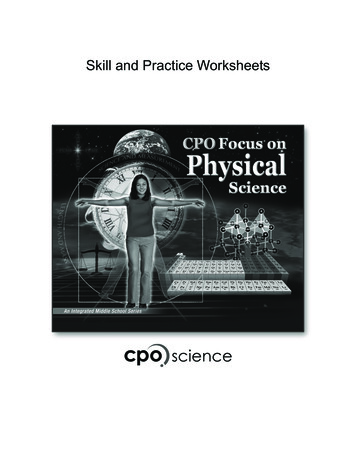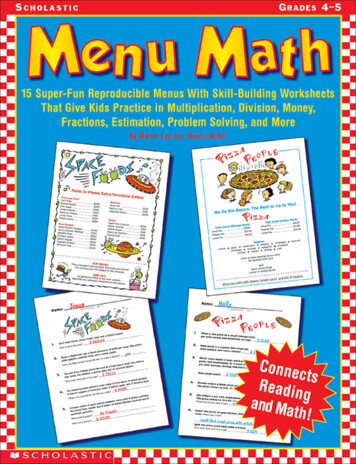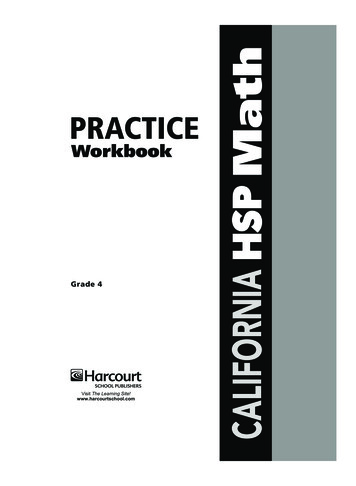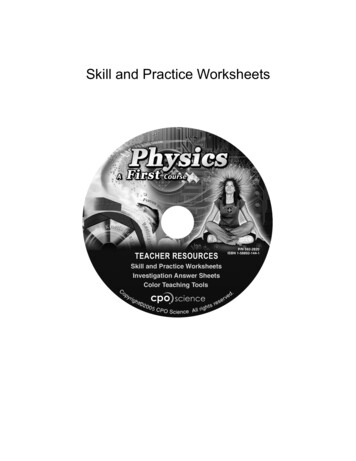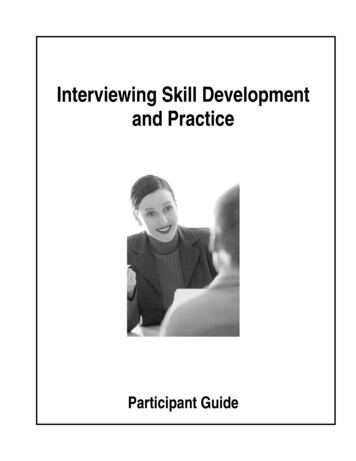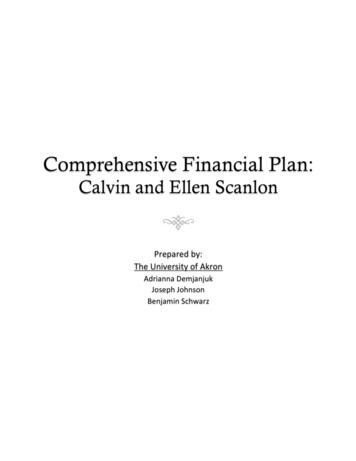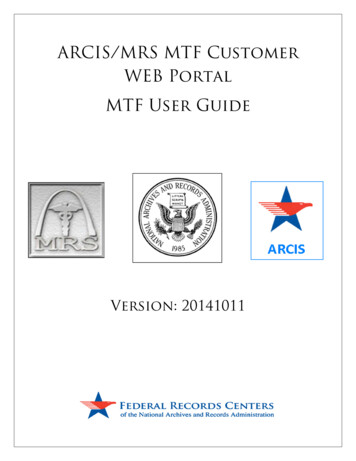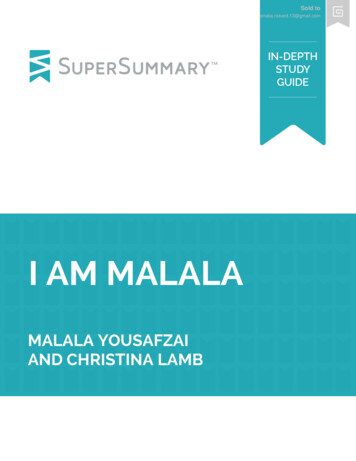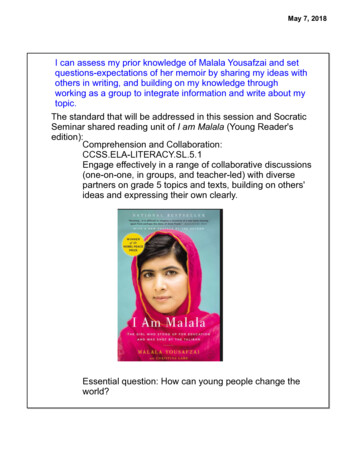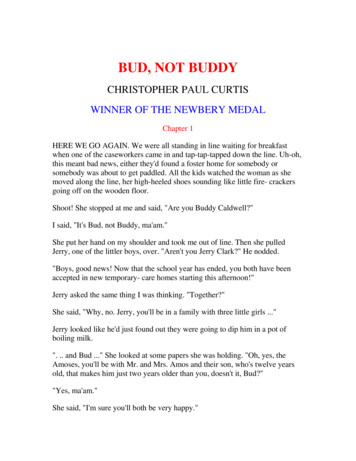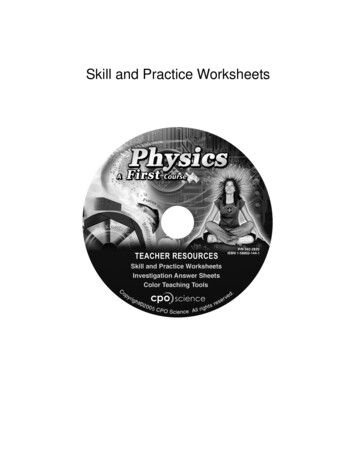
Transcription
Skill and Practice Worksheets
Physics A First CourseSkill and Practice WorksheetsCreditsCPO Science Curriculum Development TeamAuthor: Thomas Hsu, Ph.D.Vice Presidents: Thomas Narro and Lynda PennellWriters: Scott Eddleman, Mary Beth Hughes, Stacy Kissel, Lainie Ives, Erik Benton,Mary Ann Erikson, and Patsy DeCosterGraphic Artists: Polly Crisman, Bruce Holloway, and Jim TraversCurriculum ContributorsDavid Bliss, Manos Chaniotakis, and James SammonsTechnical ConsultantsTracy Morrow and Julie DaltonPhysics A First CourseTeacher Resource CD-ROMCopyright2005 CPO ScienceISBN 1-58892-144-11 2 3 4 5 6 7 8 9 - QWE - 09 08 07 06 05All rights reserved. No part of this work may be reproduced or transmitted in any form or by anmeans, electronic or mechanical, including photocopying and recording, or by any informationstore or retrieval system, without permission in writing. For permission and other rights underthis copyright, please contact:CPO Science26 Howley Street,Peabody, MA 01960(800) 932-5227http://www.cposcience.comPrinted and Bound in the United States of America
Skill and Practice WorksheetsUnit 3.13.13.13.23.23.3Scientific ProcessesDimensional AnalysisInternational System of MeasurementsMaking Line GraphsSpeed ProblemsProblem Solving Boxes (template for solvingproblems)Working with Quantities and RatesProblem Solving with RatesMass vs WeightAcceleration ProblemsNewton's Second LawAcceleration Due to GravityAnalyzing Graphs of Motion WithoutNumbersAnalyzing Graphs of Motion With NumbersAcceleration and Speed-Time GraphsApplying Newton’s Laws of MotionMomentumImpulseMomentum ConservationWorkPotential and Kinetic EnergyCollisions and Conservation of MomentumUnit 2:4.14.14.24.24.24.35.25.46.16.16.16.26.3Work Done against GravityPowerMechanical AdvantageMechanical Advantage of Simple MachinesGear RatiosEfficiencyEquilibriumTorquePythagorean TheoremAdding Displacement VectorsProjectile MotionCircular MotionUniversal GravitationUnit 3:7.17.27.38.18.1Indirect MeasurementTemperature ScalesSpecific rchimedes PrincipleBoyle’s LawBoyle’s LawPressure-Temperature RelationshipCharles’ LawThe Structure of the AtomDot DiagramsUnit 4:10.210.211.211.312.1Power in Flowing EnergyEfficiency and EnergyBalancing Chemical EquationsRadioactivityEinstein’s FormulaUnit 5:13.213.314.114.214.315.2Using an Electric MeterOhm's LawSeries CircuitsParallel CircuitsElectrical PowerCoulomb’s LawUnit 6:16.317.318.118.218.3Magnetic EarthTransformersThe Inverse Square LawCalculating Gravitational Field StrengthCalculating Electric Fields and ForcesUnit 7:19.119.220.120.120.321.1Period and FrequencyHarmonic Motion GraphsWavesStanding WavesWave InterferenceDecibel ScaleUnit 8:22.123.123.223.324.124.1Light Intensity ProblemsThe Law of ReflectionRefractionRay DiagramsThe Electromagnetic SpectrumDoppler ShiftPhysics A First Course
Name:Date:Scientific Processes1.1The scientific method is a process that helps you find answers to your questions about the world. The processstarts with a question and your answer to the question based on experience and knowledge. This “answer” iscalled your hypothesis. The next step in the process is to test your hypothesis by creating experiments that can berepeated by other people in other places. If your experiment is repeated many times with the same results andconclusions, these findings become part of the body of scientific knowledge we have about the world.Steps to the Scientific Method1. Ask a question.2. Formulate a hypothesis.3. Design an experiment to test your hypothesis.4. Conduct an experiment to test your hypothesis and collect the data5. Analyze data.6. Make a tentative conclusion.7. Test your conclusion, or refine the question, and go through each step again. Read the following story. You will use this story to practice using the scientific method.Maria and Elena are preparing for a party. Maria realizes she forgot to fill the ice cube trays in order tohave ice for the punch. Elena says that she remembers reading somewhere that hot water freezes faster thancold water. Maria is skeptical. She learned in her physics class that the hotter the liquid, the faster themolecules are moving. Since hot water molecules have to slow down more than cold water molecules tobecome ice, Maria thinks that it will take hot water longer to freeze than cold water.The girls decide to conduct a scientific experiment to determine whether it is faster to make ice cubes withhot water or cold water. Now, answer the following questions about the process they used to reach their conclusion.Asking a question1.What is the question that Maria and Elena want to answer by performing an experiment?Formulate a hypothesis2.What is Maria’s hypothesis for the experiment? State why Maria thinks this is a good hypothesis.Design and conduct an experiment3.Variables: There are many variables that Maria and Elena must control so that their results will be valid.Name at least four of these variables.
Page 2 of 24.Measurements: List at least two types of measurements that Maria and Elena must make during theirexperiment.5.Procedure: If Maria and Elena want their friends at the party to believe the results of their experiment, theyneed to conduct the experiment so that others could repeat it. Write a procedure that the girls could follow toanswer their question.1.1Collect and analyze dataThe girls conducted a carefully controlled experiment and found that after 3 hours and 15 minutes, the hot waterhad frozen solid, while the trays filled with cold water still contained a mixture of ice and water. They repeatedthe experiment two more times. Each time the hot water froze first. The second time they found that the the hotwater froze in 3 hours and 30 minutes. The third time, the hot water froze in 3 hours and 0 minutes.6.What is the average time that it took for hot water in ice cube trays to freeze?7.Why is it a good idea to repeat your experiments?Make a tentative conclusion8.Which of the following statements is a valid conclusion to this experiment? Explain your reasoning forchoosing a certain statement.a.Hot water molecules don’t move faster than cold water molecules.b.Hot water often contains more dissolved minerals than cold water, so dissolved minerals must helpwater freeze faster.c.Cold water can hold more dissolved oxygen than hot water, so dissolved oxygen must slow down therate at which water freezes.d.The temperature of water affects the rate at which it freezes.e.The faster the water molecules are moving, the faster they can arrange themselves into the nice, neatpatterns that are found in solid ice cubes.Test your conclusion or refine your questionMaria and Elena are very pleased with their experiment. They ask their teacher if they can share their findingswith their science class. The teacher says that they can present their findings as long as they are sure theirconclusion is correct.Here is where the last step (step 7) is important. At the end of any set of experiments and before you present yourfindings, you want to make sure that you are confident about your work.9.Let’s say that there is a small chance that the results of the experiment that Maria and Elena performed wereaffected by the kind of freezer they used in the experiment. What could the girls do to make sure that theirresults were not affected by the kind of freezer they used?10. Conclusion 8(b) is a possible reason why temperature has an affect on how fast water freezes. Refine youroriginal question for this experiment. In other words, create a question for an experiment that would prove ordisprove conclusion (b).
Name:Date:Dimensional Analysis1.2Dimensional analysis is used to solve problems that involve converting between different units of measurement.1.Circle the conversion factor you would choose to solve the following problems.a.How many inches are in 6 meters?1 meter 39.4 inches-------------------------OR --------------------------39.4 inches1 meterb.How many liters are in 10 U.S. gallons?1 gallon 3.79 liters----------------------OR -----------------------3.79 liters1 gallonc.100 kilometers is equal to how many miles?1 kilometer0.624 miles--------------------------OR ---------------------------0.624 miles1 kilometerd.1,000,000 grams is equal to how many kilograms?0.001kilogram1 gram----------------------------------OR ------------------------------------1 gram0.001 kilogram2.A grocery store just received a shipment of 200 cartons of eggs. Each carton holds one dozen eggs. If12 eggs 1 dozen, how many eggs did the store receive?3.A marathon is 26.2 miles long. How many kilometers is a marathon? (1 mile 1.61 km)4.The speed limit on many interstate highways in the United States is 65 miles per hour. How many kilometersper hour is that? (1 mile 1.61 km)5.Ashley is going on a trip to London. She has saved 100.00 in spending money. When she arrives inEngland, she goes to a bank to change her money into pounds. She is told that the exchange rate is 1 Britishpound 1.43 American dollars. The bank charges a fee of 4 pounds to change the money from dollars topounds. How much money, in British pounds, will Ashley have if she changes all of her dollars to pounds?6.Although it is widely believed that Germany’s Autobahn highway has no speed limit whatsoever, much ofthe highway has regulated speed limits of 130 km/hr or less, and in some places speed is limited to just60 km/hr.7.a.How many miles per hour is 130 km/hr? (1 mile 1.61 km)b.How many miles per hour is 60 km/hr?In England, a person’s weight is commonly given in stones. One English stone is equal to 14 pounds. If anEnglish friend tells you he weighs eleven stones, what is his weight in pounds?
Name:Date:International System of Measurements1.2In ancient times, as trade developed between cities and nations, units of measurements were developed tomeasure the size of purchases and transactions. Greeks and Egyptians based their measurements of length on thehuman foot. Usually, it was based on the king’s foot size. The volume of baskets was measured by how muchgoatskin they could hold. Was this a reliable method of measurement? Why or why not?During the Renaissance, as scientists began to develop the ideas of physics and chemistry, they needed betterunits of measurements to communicate scientific data more efficiently. Scientists such as Kepler, Galileo, andNewton needed to prove their ideas with data based on measurements that other scientists could reproduce.In March 30, 1791, in Sevres, France, theFrench Academy of Sciences proposed asystem that would be simple and consistent.The French Scientists based the units oflength on a fraction of the distance betweenthe Earth’s equator and the North Pole alonga line passing through Paris. The system’sbasic unit for measuring length was called ameter after the Greek word metron meaning“measure.” The set of equations below willshow you how the meter is related to otherunits in this system of measurements.1 meter 100 centimeters1 cubic centimeter 1 cm3 1 milliliter1000 milliliters 1 literThe liter was defined as the new standard for volume. One milliliter was equal to the volume of one cubiccentimeter. The gram was defined as the standard for mass. The gram was defined as the mass of one milliliter ofwater at 4 C.Today, the length of a meter is defined as the distance light travels in a small fraction of a second. The kilogramis the current “base unit” for mass. A kilogram is defined as the mass of a certain lump of platinum and iridiumthat is kept in Paris under glass to protect it from chemical changes that could alter its mass. The metric system isalso called the SI system, from the French Le Systemè International d’Unites.The United States adopted the metric system in 1884. However, the adoption process has been slow, and manyAmericans still use the English System (feet, inches, and pounds). Since 1992, U.S. government agencies havebeen required to use the metric system in business transactions.The majority of people in the world use the metric system of measurements in their daily lives. For example, ifyou travel overseas or to Canada, you will find that a car’s speed is measured in kilometers per hour.
Page 2 of 3The metric system is easy to use because all the units are based onfactors of 10. In the English system, there are 12 inches in a foot, 3 feetin a yard, and 1,760 yards in a mile. In the metric system, there are10 millimeters in a centimeter, 100 centimeters in a meter, and1,000 meters in a kilometer. From the graphic, how many kilometers is itfrom the North Pole to the equator? Answer: 10,000 kilometers.Theseare the base units of measurement that you will use in your scientificstudies. The prefixes above are used with the base units when measuringvery large or very small quantities.When you are measuring:masslengthvolumeforcetemperaturetimeUse this base unit:kilogrammeterliternewtondegree Celsiussecond1.2Symbol of unitkgmLN Csec or sYou may wonder why the kilogram, rather than the gram, is called the base unit for mass. This is because themass of an object is based on how much matter it contains as compared to the standard kilogram made fromplatinum and iridium and kept in Paris. The gram is such a small amount of matter that if it had been used as astandard, small errors in reproducing that standard would be multiplied into very large errors when largequantities of mass were measured.The following prefixes in the SI system indicate the multiplication factor to be used with the basic unit. Forexample, the prefix kilo- is for a factor of 1,000. A kilometer is equal to 1,000 meters and a kilogram is equal to1,000 grams.Prefixpico–SymbolpMultiplication Factor0.000000000001 10-12nano–n0.000000001 10-9micro–µ0.000001 10-6milli–m0.001 10-3centi–c0.01 10-2deci–d0.1 10-1deka–da10 101hecto–h100 102kilo–k1,000 103mega–M1,000,000 106giga–G1,000,000,00
CPO Science Curriculum Development Team Author: Thomas Hsu, Ph.D. Vice Presidents: Thomas Narro and Lynda Pennell Writers: Scott Eddleman, Mary Beth Hughes, Stacy Kissel, Lainie Ives, Erik Benton, Mary Ann Erikson, and Patsy DeCoster Graphic Artists: Polly Crisman, Bruce Holloway, and Jim Travers Curriculum Contributors David Bliss, Manos Chaniotakis, and James Sammons Technical
